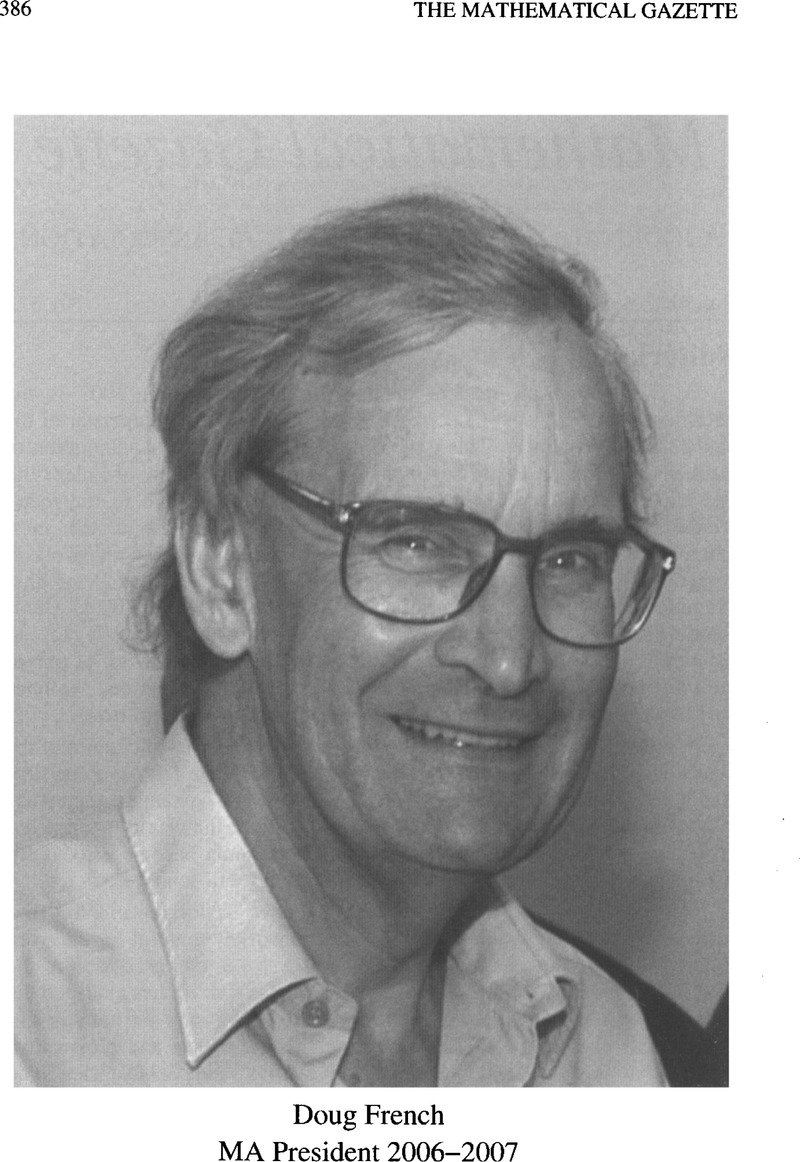No CrossRef data available.
Article contents
Simplicity and Surprise in School Mathematics (Presidential Address 2007)
Published online by Cambridge University Press: 01 August 2016
Abstract
An abstract is not available for this content so a preview has been provided. Please use the Get access link above for information on how to access this content.

Information
- Type
- Articles
- Information
- Copyright
- Copyright © The Mathematical Association 2007
References
Notes and References
2.
Gray, Eddie and Tall, David
Success and Failure in Mathematics in Mathematics Teaching, ATM (March 1993).Google Scholar
3. The School Mathematics Project (SMP), Mathematics in Education and Industry (MEI) and the School Mathematics Individualised Learning Experience (SMILE) are three independent curriculum development bodies which have had and continue to have a substantial influence on mathematics teaching and learning over the last 40 years in the United Kingdom. Sadly, SMILE is no more, but its influence lives on.Google Scholar
4. The Mathematical Association (MA), the Association of Teachers of Mathematics (ATM) and the National Association for Numeracy and Mathematics in Colleges (NANAMIC) are three organisations for mathematics teachers and college lecturers in the United Kingdom.Google Scholar
5. NRich (at www.nrich.maths.org.uk) provides a wide variety of challenging mathematical activities for students of all ages. The United Kingdom Mathematics Trust (UKMT) and the Primary Mathematics Challenge (PMC), which is run by the Mathematical Association, both organise challenges at several levels for school students.Google Scholar
6. The MEI Further Mathematics Network was established to encourage all students who could benefit to study A level Further Mathematics by providing access to teaching and resources.Google Scholar
7. The Standards Unit was part of the Department for Education of Science (DfES) and it funded what has become known as the ‘Standards Unit Box’, a collection of innovative classroom materials which includes the publication Improving Learning in Mathematics written by Malcolm Swan.Google Scholar
8. The National Centre for Excellence in Mathematics Teaching (NCETM) was established in 2006 with a brief related to the professional development of all teachers and lecturers. (For further information go to www.ncetm.org.uk.)Google Scholar
9.
French, Doug (editor), Resource Pack for Assessment for Learning in Mathematics, The Mathematical Association (2005).Google Scholar
10.
Ma, Liping
Knowing and Teaching Elementary Mathematics
Lawrence Erlbaum Associates (1999).Google Scholar
11.
Sandifer, Ed
How Euler Did It: V, ? and F Parts 1 and 2, June 2004 and July 2004, from MAA Online, which can be downloaded from: www.maa.org/editorial/euler/How%20Euler%20Did%20It%2008%20V%20E%20and%20F%20part%201.pdf
www.maa.org/editorial/euler/How%20Euler%20Did%20It%2009%20V%20E%20and%20F%20part%202.pdf
Google Scholar
12. For further information about Carbon 60 go to www.popmath.org.uk/sculpture/pages/carbon.html.Google Scholar
13. The Kingston Communications (KC) Stadium is the home of Hull City football club and The Deep is Hull’s splendid aquarium opened in 2002, which is well worth a visit.Google Scholar
14. The design specification of the Department of Transport’s football traffic sign will be found at www.dft.gov.uk/pgr/roads/tss/workingdrawings/touristtseries/.Google Scholar

